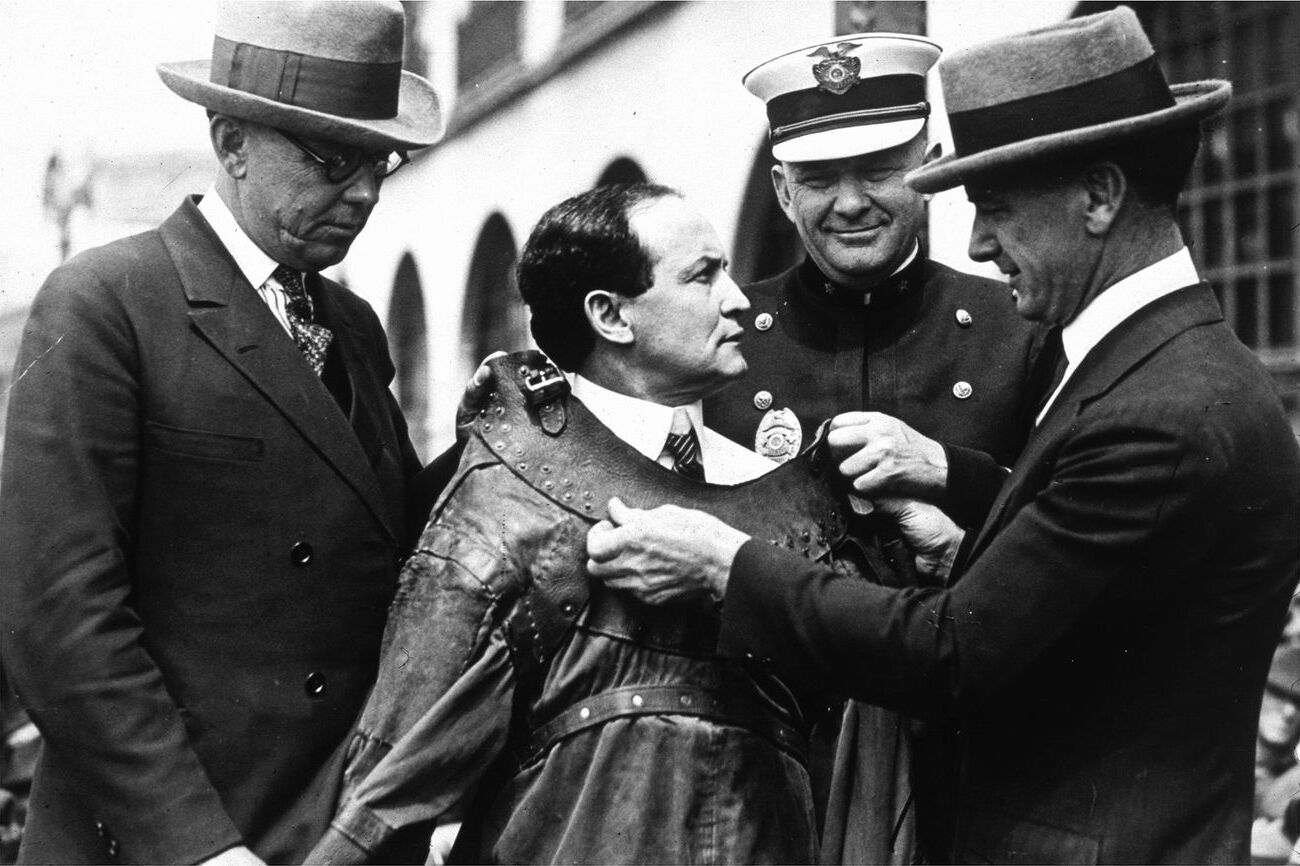
Harry Houdini, the legendary magician and escape artist, left a mark on the world with his incredible feats and mysterious persona. But what about his death? How did this master of illusion meet his end? Houdini's death has been surrounded by intrigue and speculation, making it as fascinating as his life. Some say it was due to a ruptured appendix, while others believe there was more to the story. In this post, we'll uncover 37 intriguing facts about Harry Houdini's death, shedding light on the circumstances, theories, and legacy of this enigmatic figure. Get ready to dive into the mystery behind the final act of the great Houdini.
Key Takeaways:
- Harry Houdini's death on Halloween at 52 sparked conspiracy theories, but most believe a punch to his stomach and medical complications were the primary causes.
- Despite his mysterious death, Houdini's legacy lives on, inspiring magicians and fans worldwide, ensuring that he will never be forgotten.
The Mysterious Death of Harry Houdini
Harry Houdini, the legendary escape artist, left the world with as much mystery as he did during his life. His death has been the subject of speculation, intrigue, and fascination for decades. Here are some captivating facts about the circumstances surrounding his demise.
-
Harry Houdini died on October 31, 1926, Halloween, adding an eerie twist to his already mysterious persona.
-
The official cause of death was peritonitis, resulting from a ruptured appendix.
-
Houdini was 52 years old at the time of his death.
-
He had been performing despite severe pain from his appendicitis, which he initially dismissed as stomach cramps.
-
A student named J. Gordon Whitehead punched Houdini in the stomach multiple times, which many believe contributed to his appendix rupture.
The Punch Incident
The infamous punch incident is one of the most debated aspects of Houdini's death. Let's delve into the details of what happened and its aftermath.
-
Whitehead approached Houdini backstage at the Princess Theatre in Montreal, asking if it was true he could withstand any blow to the abdomen.
-
Houdini, who was reclining on a couch, agreed but didn't have time to brace himself before Whitehead delivered several hard punches.
-
Witnesses reported that Houdini winced in pain but continued with his performance later that evening.
-
The punches likely aggravated an already inflamed appendix, leading to its rupture.
-
Houdini continued to perform for two more days before collapsing from the pain.
Medical Attention and Final Days
Houdini's final days were marked by a struggle to get proper medical attention and his determination to continue performing.
-
After collapsing, Houdini was taken to Grace Hospital in Detroit.
-
Doctors initially misdiagnosed his condition, thinking it was simply a case of severe stomach cramps.
-
By the time they realized it was a ruptured appendix, peritonitis had already set in.
-
Houdini underwent surgery, but the infection had spread too far.
-
Despite his critical condition, Houdini remained conscious and even joked with his doctors.
Theories and Speculations
Houdini's death has sparked numerous theories and speculations over the years. Some believe there was more to his demise than meets the eye.
-
Some conspiracy theorists suggest Houdini was murdered by spiritualists who were angered by his debunking of their practices.
-
Houdini had many enemies in the spiritualist community, as he spent much of his career exposing fraudulent mediums.
-
There are claims that Whitehead was a spiritualist sent to harm Houdini, though this has never been proven.
-
Another theory posits that Houdini's death was a result of a curse placed on him by vengeful spiritualists.
-
Despite these theories, most historians agree that the punch incident and subsequent medical complications were the primary causes of his death.
Legacy and Impact
Houdini's death did not diminish his legacy; if anything, it added to the mystique surrounding his life and career.
-
Houdini's widow, Bess, held annual séances on Halloween for ten years after his death, hoping to communicate with him.
-
Houdini had promised Bess that if it were possible to communicate from the afterlife, he would do so.
-
Despite numerous attempts, Bess never received a message from Houdini.
-
Houdini's death inspired many books, movies, and documentaries, further cementing his status as a legendary figure.
-
His life and mysterious death continue to captivate audiences and inspire magicians worldwide.
The Final Resting Place
Houdini's burial and the events surrounding it are as intriguing as his life and death.
-
Houdini was buried in Machpelah Cemetery in Queens, New York.
-
His grave is marked by a large monument featuring a bust of Houdini.
-
The Society of American Magicians holds an annual ceremony at his grave on the anniversary of his death.
-
Houdini's grave has been vandalized several times, leading to increased security measures.
-
Despite his Jewish heritage, Houdini's grave features symbols from various religions, reflecting his diverse interests and beliefs.
The Houdini Code
Before his death, Houdini and Bess devised a secret code to verify any messages from the afterlife.
-
The code consisted of ten words that only Bess and Houdini knew.
-
Bess revealed the code to a few trusted friends in the hope that Houdini would use it to communicate.
-
Several mediums claimed to have received messages from Houdini, but none could produce the correct code.
-
Bess eventually declared that she no longer believed Houdini would communicate from the afterlife.
-
Despite this, many Houdini enthusiasts continue to hold séances in the hope of hearing from the great magician.
The Enduring Mystery
Houdini's death remains a topic of fascination and debate, with new theories and discoveries emerging over time.
-
In 2007, Houdini's family considered exhuming his body to investigate the possibility of poisoning, but the plan was eventually abandoned.
-
Houdini's life and death continue to inspire new generations of magicians, historians, and fans, ensuring that his legacy will never be forgotten.
The Final Act
Harry Houdini's death remains shrouded in mystery and intrigue. Despite his incredible feats of escapism, he couldn't escape the clutches of fate. His passing on Halloween in 1926 left fans and skeptics alike with questions. Some believe a punch to the stomach led to his demise, while others think a ruptured appendix was the cause. Houdini's life and death continue to captivate, reminding us of his extraordinary talent and the enigma that surrounded him. His legacy lives on through countless books, movies, and documentaries, ensuring his name remains synonymous with magic and illusion. Whether you’re a history buff or just curious, Houdini's story offers a fascinating glimpse into the life of one of the greatest performers ever. So next time you hear his name, remember the man who could escape anything—except his own mortality.
Frequently Asked Questions
Was this page helpful?
Our commitment to delivering trustworthy and engaging content is at the heart of what we do. Each fact on our site is contributed by real users like you, bringing a wealth of diverse insights and information. To ensure the highest standards of accuracy and reliability, our dedicated editors meticulously review each submission. This process guarantees that the facts we share are not only fascinating but also credible. Trust in our commitment to quality and authenticity as you explore and learn with us.


